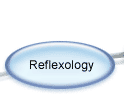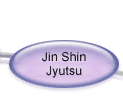   |
   |
   |
     |
Personal Development Mentorship - What it is
Personal Development Mentorship | What it is | Life Coaching | FAQ's | Corporate Environment | Testimonials | Article
The entry point for anyone interested in Personal Development Mentorship is to commit to a series of one-one-one Resonance Repatterning sessions, either in person or on the phone, so that I can grow to understand the client's history and background and identify the unconscious patterns that are holding them back from achieving their full potential. This consists of Identifying the Problems and the Positive Intentions. Problems are something we have that we don't want, and Intentions are something we Want, that we don't have. When we have identified this we look at the Unconscious Patterns, not Subconscious, because it can come from our D.N.A., the moment of conception (where the sperm and the egg from the parents start to shape who we are as individuals). Vision, the way we perceive the world; our early experiences (especially between the formative years between 0 - 8; relationships; family systems, etc. Mentorship is a personal developmental relationship in which a more experienced or more knowledgeable person helps to guide a less experienced or less knowledgeable person. However, true mentoring is more than just answering occasional questions or providing ad hoc help. It is about an ongoing relationship of learning, dialogue, and challenge. The person in receipt of mentorship may be referred to as a protégé (male), a protégée (female), an apprentice or, in recent years, a mentee. "Mentoring" is a process that always involves communication and is relationship based, but its precise definition is elusive. One definition of the many that have been proposed, is Mentoring is a process for the informal transmission of knowledge, social capital, and the psychosocial support perceived by the recipient as relevant to work, career, or professional development; mentoring entails informal communication, usually face-to-face and during a sustained period of time, between a person who is perceived to have greater relevant knowledge, wisdom, or experience (the mentor) and a person who is perceived to have less (the protégé)".[1] Mentoring in Europe has existed since at least Ancient Greek times. Since the 1970s it has spread in the United States of America mainly in training contexts[2] and it has been described as "an innovation in American management".[3] The focus of mentoring is to develop the whole person and so the techniques are broad and require wisdom in order to be used appropriately.[5] A 1995 study of mentoring techniques most commonly used in business[6] found that the five most commonly used techniques among mentors were:
It has been my experience that it takes years of experiencing life and all its permutations that create the right tools, to mentor every individual, whether male or female, on their personal journey. Past experience hones the intuitive skills that are necessary when dealing with 'what is said' and 'what is not said.' An individual can read a dozen books on personal and business development but there is nothing like being 'in the moment' and asking the right questions, tailor-made to the individual having a session. Out of this a plan of action is formulated, and if followed meticulously leads to success. The power must be with the mentor to hold the space for the client, to in turn empower them to 'pick up the ball and run with it.' This process can be very subtle because it can operate on all levels - physical, mental, emotional and spiritual. Physical: the client may be encouraged to change the perception they have of themselves at a physical level, in terms of weight and/or grooming, so as to increase their self confidence in their public interactions. Mental: to develop the resilience to meet the everyday challenges they may meet in terms of self-confidence, thinking quickly on their feet and being in the moment. Emotional: to flat-line all the old 'tapes' and perceptions about themselves, that goes to the sense of self-worth, because historically they were unable to rise to the challenge of being appropriately assertive and asking for what they want and need. Spiritual: to understand that were are not human beings having a spiritual experience, but spiritual beings having a human experience. We can then create a vision of what we want for ourselves now and in the future. We are capable of creating our own world, in spite of the apparent obstacles in our way. References 1. Bozeman, B.; Feeney, M. K. (October 2007). "Toward a useful theory of mentoring: A conceptual analysis and critique". Administration & Society 39 (6): 719-739.doi:10.1177/0095399707304119. 2. Parsloe, E.; Wray, M. J. (2000). Coaching and mentoring: practical methods to improve learning. Kogan Page. ISBN 978-0-7494-3118-1. 3. Odiorne, G. S. (1985). "Mentoring - An American Management Innovation". Personnel Administrator (30): 63-65. 4. "William BlakeAge Teaching Youth c.1785-90". Tate Britain. Retrieved January 14, 2013. 5. Daloz, L. A. (1990). Effective Teaching and Mentoring. San Francisco: Jossey Bass. p. 20. 6. Aubrey, Bob and Cohen, Paul (1995). Working Wisdom: Timeless Skills and Vanguard Strategies for Learning Organizations. Jossey Bass. pp. 23, 44-47, 96-97. 7. Posner, B. and Kouzes, J. (1993). Credibility. San Francisco: Jossey Bass. p. 155. |
19-5840 Dover Crescent Richmond, BC V7C 5R7 Canada - Google Map
Tel: 604-285-7013
All material copyright ©2015 by Michael E. Fisher
